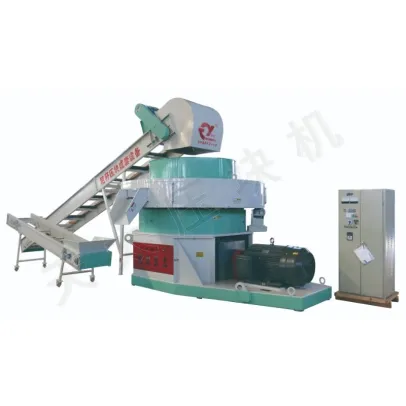Nov. 07, 2024
Briquetting machines are essential tools that transform waste into high-density fuel briquettes, yet operators sometimes encounter surprisingly elevated energy consumption levels. Identifying the reasons behind this increased energy usage is crucial for minimizing operating costs and enhancing machine effectiveness. The preparation of raw materials is a critical step in the briquetting process. If the materials are not adequately prepared—such as being excessively large or having inconsistent moisture levels—the machine will expend more energy to compress them. Most briquetting systems require materials to be crushed, shredded, or dried prior to being fed into the briquetting chamber. For instance, moisture-rich materials create greater resistance during the compaction phase, thus requiring additional power for achieving the targeted output level. Failing to carry out regular maintenance can result in escalated energy consumption. When parts such as hydraulic systems, pressing cylinders, or motors experience wear, the machine must exert more effort, which in turn raises energy usage. Adopting a routine maintenance strategy that includes lubrication and inspections is vital for ensuring that the machine operates efficiently, thereby reducing unnecessary power consumption. Briquetting machines typically come equipped with adjustable settings that accommodate different material types. However, if settings such as compression force, speed, or temperature are not aligned with the specific material being processed, the machine may inadvertently consume extra energy. By tuning these configurations based on the properties of the materials, one can significantly enhance energy efficiency and decrease operational expenditures. Every Briquette Machine is generally tailored to process certain types of materials effectively. Choosing a machine that matches the specific type of material—such as wood, metal, or biomass—ensures optimal energy performance. Compatible machinery reduces the effort required for compression, leading to decreased energy consumption. Auxiliary equipment such as chip conveyors, silos, or hoppers can significantly enhance the briquetting process. These tools facilitate a steady material flow into the briquetting machine and help mitigate energy surges. By optimizing feeding systems, peripheral devices can minimize operational interruptions that result in elevated energy usage. Handling materials that possess high moisture content or generate excess heat during processing can escalate energy demands. Implementing drying systems to decrease material moisture content, along with cooling mechanisms to regulate the temperature of the machine, can optimize energy efficiency. These enhancements foster a stable working environment, thus preventing energy spikes caused by inconsistencies in the materials or their surrounding conditions. High energy consumption in quality briquetting machines is often linked to aspects such as material preparation, machine upkeep, and operational settings. By addressing these elements through diligent maintenance, optimal configurations, and utilizing suitable machinery for specific materials, operators can effectively diminish energy consumption and lower their operational costs. For briquetting operations focusing on sustained efficiency, implementing these recommendations can lead to substantial savings over time.Exploring the High Energy Consumption in Briquetting Machinery
Key Factors Contributing to Elevated Energy Usage
Poor Material Preparation
Neglected Machine Maintenance
Improper Machine Configuration

Strategies for Enhancing Energy Efficiency in Briquetting Machines
Select the Appropriate Machine for Your Raw Materials
Incorporate Auxiliary Equipment
Employ Cooling and Moisture Regulation Techniques
Final Thoughts: Lowering Energy Consumption for Economic Viability
52
0
0
All Comments (0)
Previous: None
Next: None
If you are interested in sending in a Guest Blogger Submission,welcome to write for us!
Comments